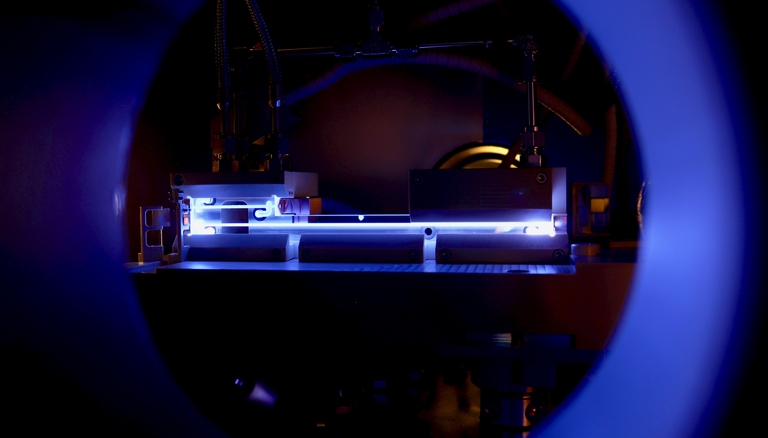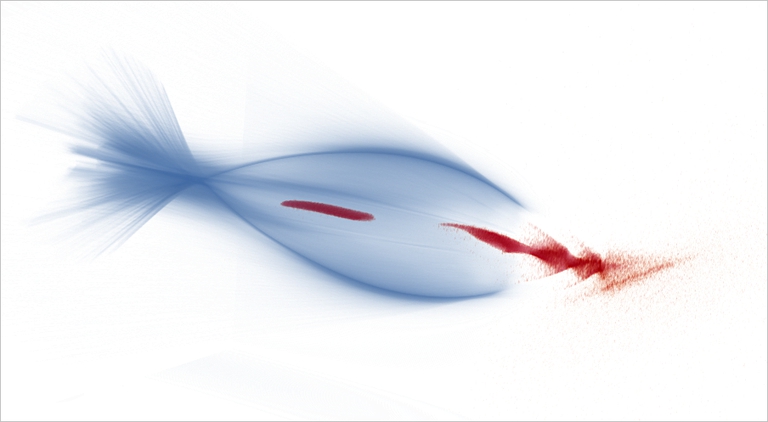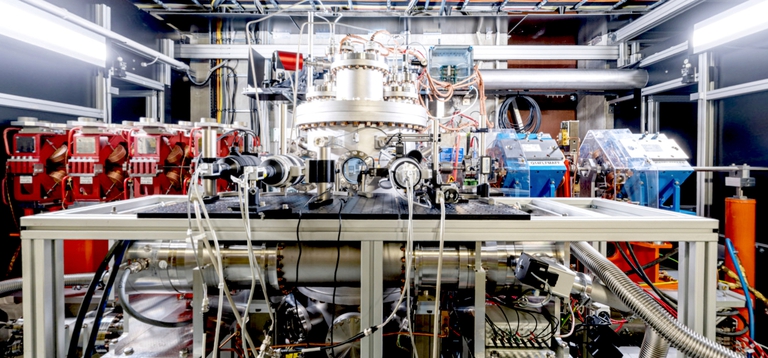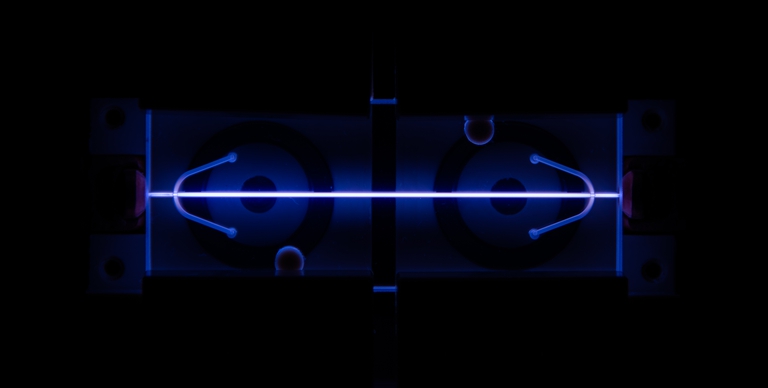Beam-Driven Plasmas
MPA 2
Plasma Accelerators
MPA 2

Figure 1: The FLASHForward 50 mm (top) and 195 mm (bottom) plasma cells filled with argon plasma. Credit: DESY, Carl A. Lindstrøm
A plasma is a soup of charged particles, created by separating atoms form their orbiting electrons. The simplest plasma is created by ionising hydrogen into a single electron and a single proton. A high-intensity bunching of charged particles fired through the plasma can then excite a strong electromagnetic field - a kind of 'wake'. The bunch of charged particles drives through the plasma acting in a similar way to a snow plough, pushing the plasma electrons out of its way to leave only the positively charged ions behind. If a second bunch of electrons is placed at the correct location behind the first bunch then it can surf on the wave and will be accelerated by the strong electric fields generated by the wake (See Figure 2 for a representation of the wakefield process). In this way plasma accelerators can achieve acceleration gradients up to a thousand times higher than the most powerful accelerators in use today. Thus they could drastically reduce the size of kilometre-scale facilities such as particle colliders or free-electron lasers.

Figure 2: PIC simulation output of a beam-driven plasma wakefield. Credit: DESY, Alberto Martinez de la Ossa
FLASHForward
At DESY, very intense bunches of electrons are generated by the superconducting accelerator FLASH, which are then used to drive high-strength wakefields at the FLASHForward experiment (see Figure 3 for a picture of the FLASHForward central interaction chamber where the intense electron bunches are made to interact with the plasma). FLASHForward - only one of a handful of beam-driven plasma-wakefield experiments worldwide - performs research at the frontier of the field with the aim to answer the outstanding question of whether this exciting high-gradient technology can be meaningfully applied to current and future particle accelerators. In order to answer this question, FLASHForward's goal is to demonstrate the plasma acceleration of many bunches per second with high-energy-transfer efficiency - all whilst preserving the extremely high quality of the accelerating beams. Excellent progress towards these goals has already been made at FLASHForward with the measurement of the recovery time of a plasma after driving a high-intensity wakefield (R. D’Arcy et al., Nature 603, 58-62 (2022)) and the demonstration of energy-spread preservation of an incoming FLASH beam during plasma acceleration (C.A. Lindstrøm et al., Phys. Rev. Lett. 126, 014801 (2021)).
The ADVANCE laboratory
Essential to reaching this goal will be a deeper understanding of how the plasma-wakefield process works. The core component of a plasma accelerator is the plasma itself, which can be generated by firing a high-voltage discharge through a gas contained within a long, thin tube. After the plasma is generated it emits light, which can be used to understand the properties of the plasma (see Figure 4 for an example of blueish light being emitted form an argon plasma). The ADVANCE laboratory is a space dedicated to the characterisation of plasma-acceleration sources and devices. When their designs are complete, they may be installed at FLASHForward for experimentation with the high-intensity electron bunches of FLASH or elsewhere at DESY for experimentation with high-intensity packets of photons for laser-wakefield experimentation.

